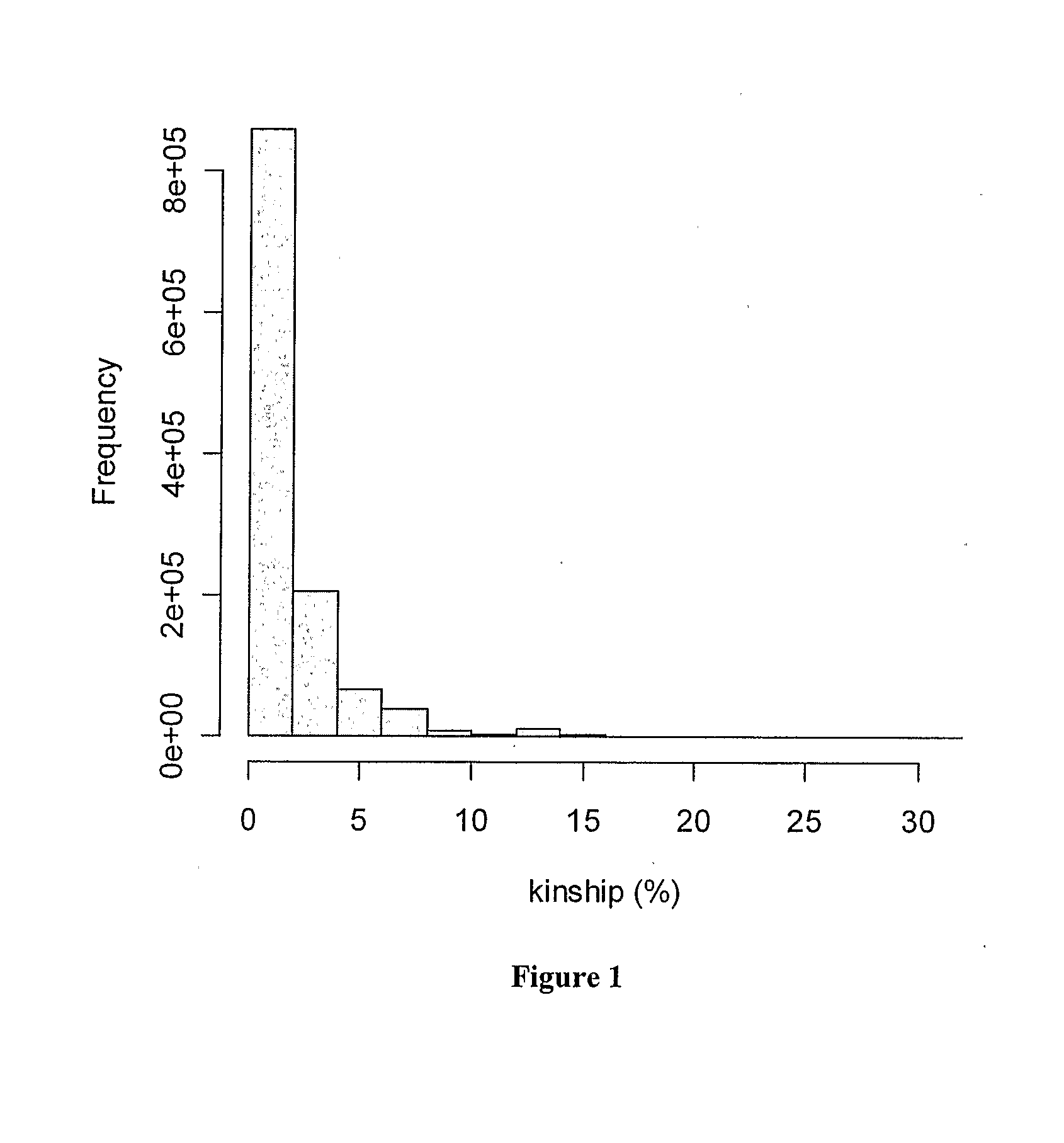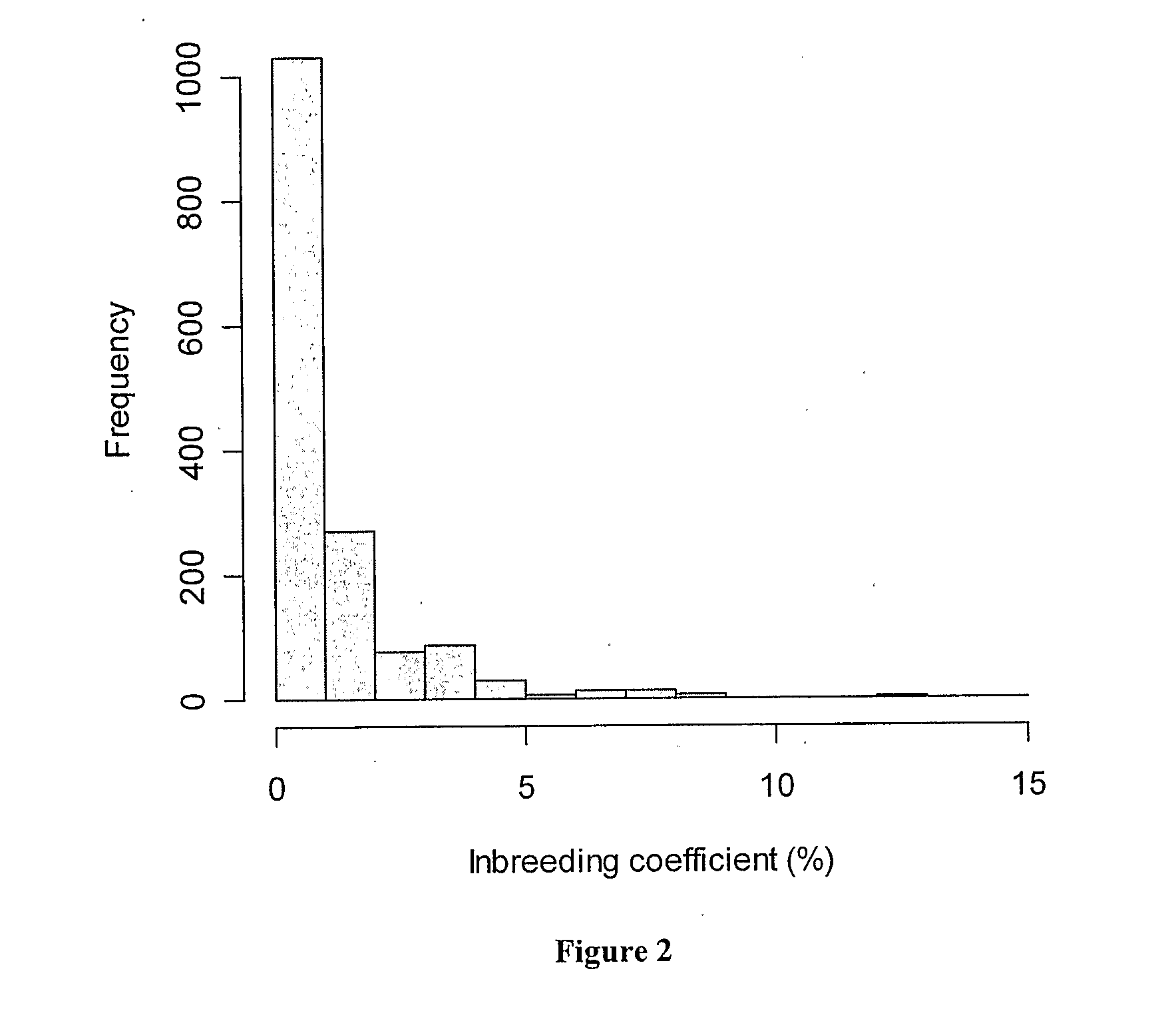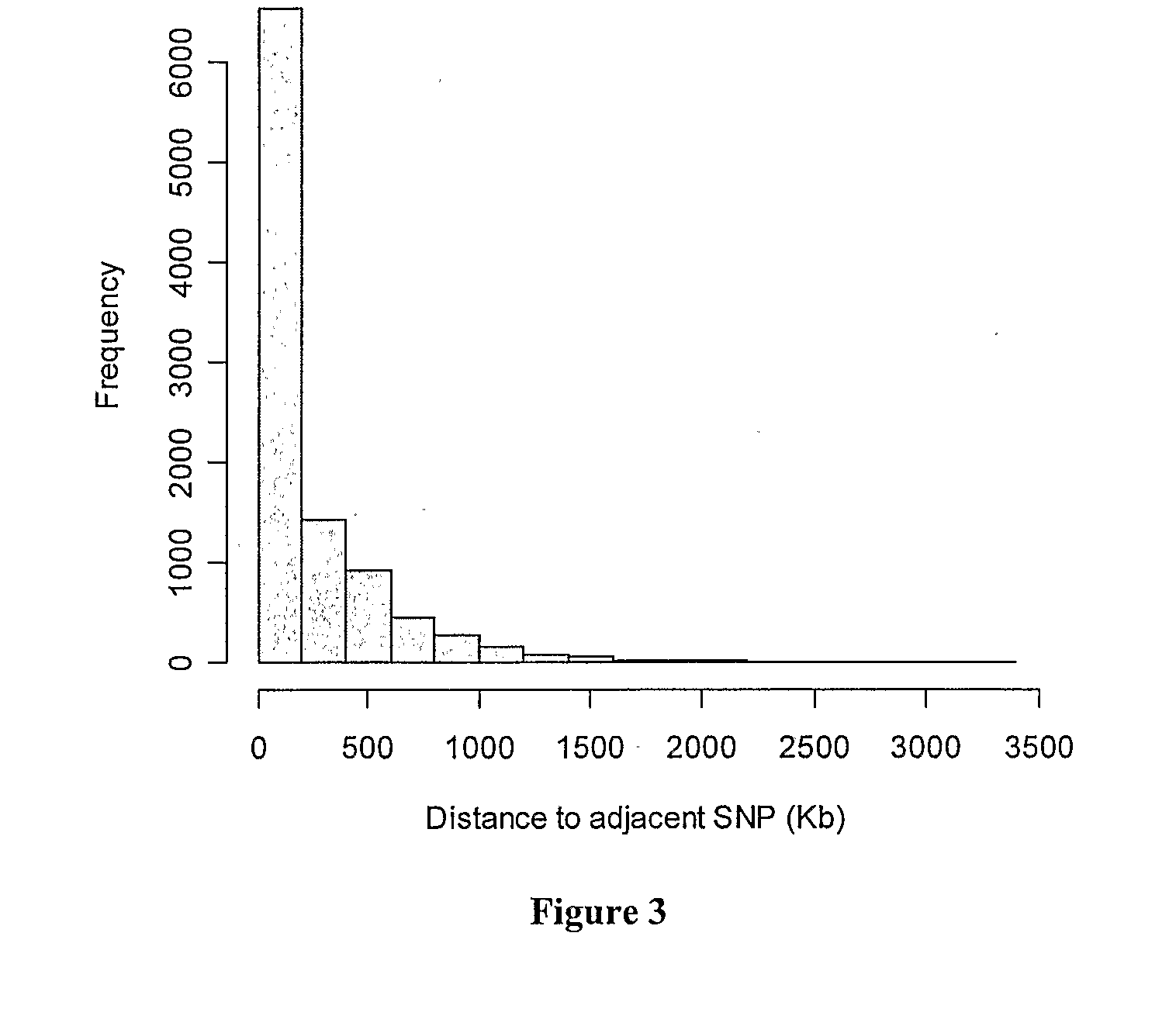Chromosomal Blocks as Markers for Traits
a technology of chromosomal blocks and markers, applied in the field of linkage disequilibrium unit maps and methods for predicting phenotypes, can solve the problems of large variance in ld between markers across the genome, significant variation, and complex structure of human ld structure, and achieves large variance in ld between markers irrespective of the linkage disequilibrium unit map
- Summary
- Abstract
- Description
- Claims
- Application Information
AI Technical Summary
Benefits of technology
Problems solved by technology
Method used
Image
Examples
example 1
Methods and Materials
1.1 DNA Samples and Selection of Bulls
[0058]A panel of 1,546 Holstein Friesian bulls born between 1955 and 2001 was selected for genotyping. Most of these bulls were born in Australia (1,435) with smaller numbers being born in USA (53), Canada (35), New Zealand (8), Netherlands (8), Great Britain (3), France (3) and Germany (1). There were more bulls from the recent cohorts than from older cohorts. This panel of bulls represents near-to-normal distributions for Australian Breeding Values (ABVs) for the most common production traits recorded through the Australian Dairy Herd Improvement Scheme (ADHIS; http: / / www.adhis.com.au / ). From ADHIS pedigree information (http: / / www.adhis.com.au / , ADHIS Pty. Ltd, Level 6 84 William Street, Melbourne 3000 Victoria Australia) and using FORTRAN programs in the PEDIG package of D. Boichard (http: / / dga.jouy.inra.fr / sgqa / diffusions / pedig / pedigE.htm), kinship (coefficient of coancestry) was calculated for each pairwise combinations...
example 2
Development of LD Maps for BTA-1 to BTA-29
[0082]Of the 15,036 SNPs which were genotyped, 13,049 (87%) were polymorphic (minor allele frequency (MAF)>0) in the bulls included in this study. A further 1,776 (14% of the biallelic) SNPs had less than 0.05 MAF. Of the polymorphic SNPs on the autosomes, 824 (7.0%) showed deviation from Hardy-Weinberg Equilibrium (P<0.0001), and were excluded from this analysis. The SNPs (232) typed in less than 50% of animals were also removed from the analysis. Of the remaining SNPs, 9,195 were able to be located on autosomes in the bovine sequence assembly Btau 3.1 and were included in the present analysis. Of these, 7,057 (77%) of SNPs are from the MegAllele 10 k SNP panel and 2,138 (23%) from the custom SNP panel. The number of SNPs on chromosomes varied from 158 on BTA-27 to 528 on BTA-1. The average inter-marker spacing for the entire genome was 251.8±4.0 kb with a median spacing of 93.9 kb. The distribution of SNP spacing over the genome is shown i...
example 3
Structure of LD Along Bovine Chromosomes BTA-1 to BTA-29
[0085]A total of 204 LD blocks with tracts of consecutive intervals spanning one LDU were observed along bovine chromosomes. These LD blocks collectively cover all of the chromosomes with a mean LD block size of 13 MB. The location of these blocks is set out in Table 1.
PUM
| Property | Measurement | Unit |
|---|---|---|
| Fraction | aaaaa | aaaaa |
| Fraction | aaaaa | aaaaa |
| Fraction | aaaaa | aaaaa |
Abstract
Description
Claims
Application Information
 Login to View More
Login to View More - R&D
- Intellectual Property
- Life Sciences
- Materials
- Tech Scout
- Unparalleled Data Quality
- Higher Quality Content
- 60% Fewer Hallucinations
Browse by: Latest US Patents, China's latest patents, Technical Efficacy Thesaurus, Application Domain, Technology Topic, Popular Technical Reports.
© 2025 PatSnap. All rights reserved.Legal|Privacy policy|Modern Slavery Act Transparency Statement|Sitemap|About US| Contact US: help@patsnap.com



